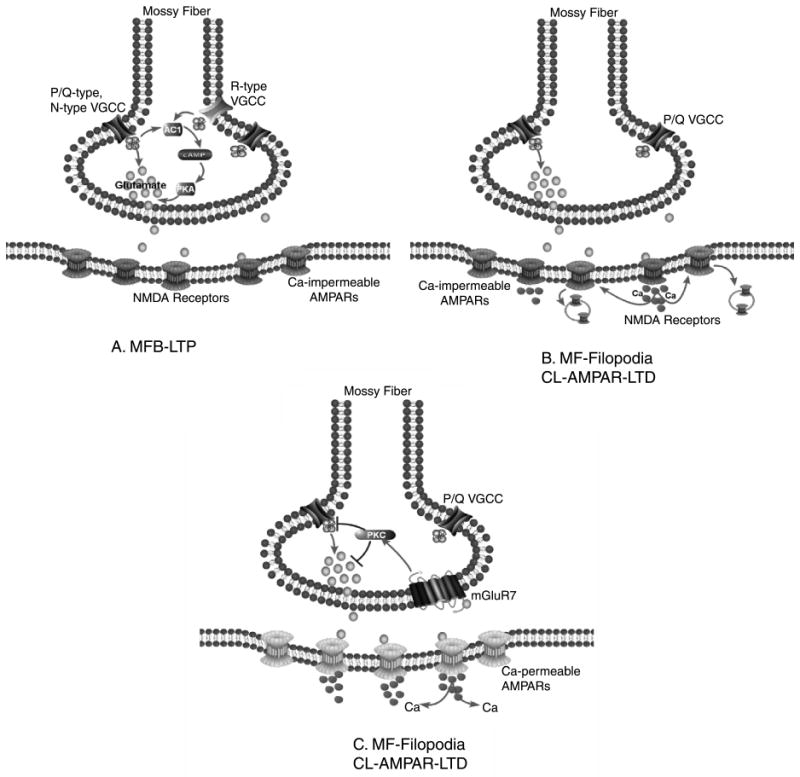Fig. 5.

Target-specific plasticity at mossy fiber synapses. Three schematics to illustrate the prevailing mechanisms underlying the three forms of plasticity at mossy fiber synapses onto pyramidal cells (Panel A) and inhibitory interneurons (Panels B and C). (A) A high-frequency non-associative induction paradigm produces LTP at mossy fiber bouton-pyramidal cell synapses that is NMDAR-independent and has a presynaptic locus of expression. Expression is thought to involve a Ca2+-dependent increase in neurotransmitter release via a mechanism involving adenylyl cyclase 1 (AC1), cAMP, and protein kinase A (PKA) modulation of the release machinery. B and C: At filopodial synapses onto mossy fiber-CA3 interneuron a non-associative induction paradigm induces two forms of long-term depression. (B) Long-term depression at mossy fiber–interneuron synapses comprised of Ca2+-impermeable (CI-) AMPA receptor synapses has a postsynaptic locus of induction and expression, is NMDA receptor dependent, and involves an endocytosis of surface AMPA receptors reminiscent of NMDAR-dependent LTD observed at principal cell synapses. (C) Long-term depression at mossy fiber–interneuron synapses comprised of CP-AMPA receptors has a requirement for a postsynaptic increase in intracellular Ca2+ but is expressed presynaptically. This form of LTD is NMDA receptor independent, requires activation of presynaptic mGluR7 and downstream PKC-dependent cascades to reduce transmitter release probability via a reduction of the voltage-gated Ca2+ transient generated by P/Q Ca2+ channels.
